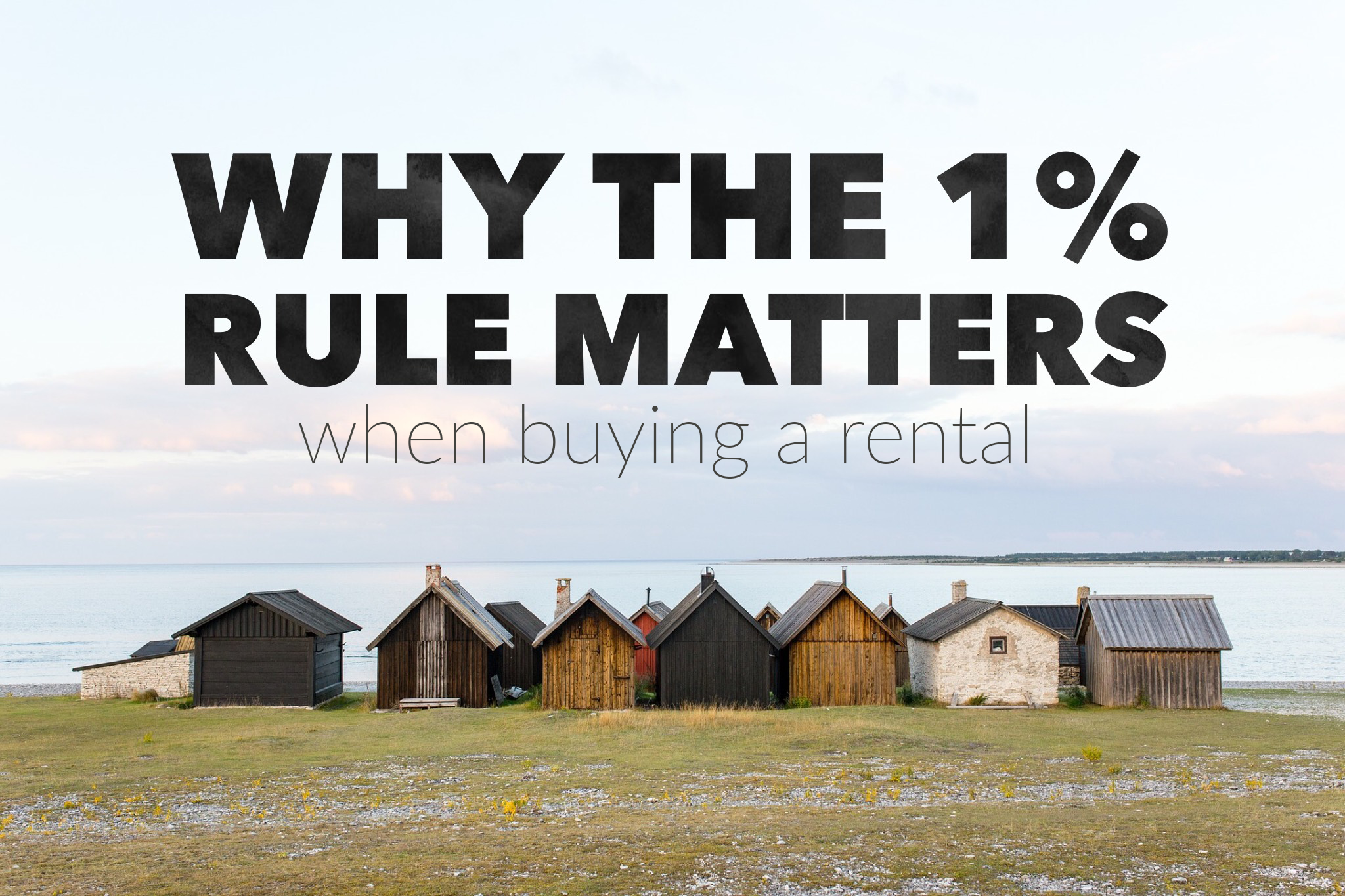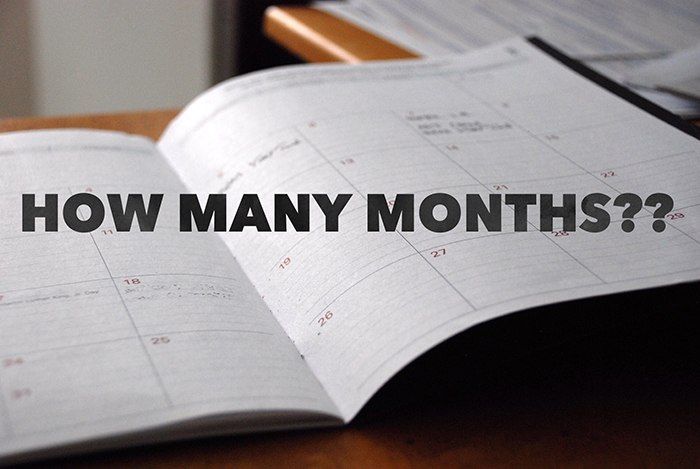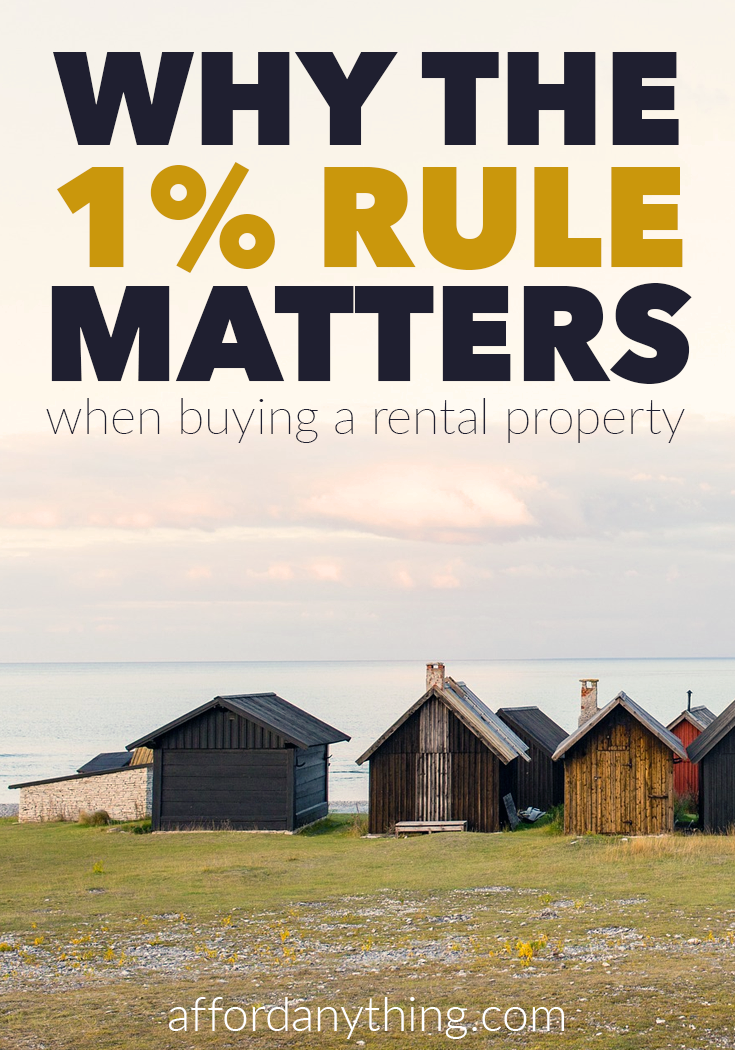
Hey, I have a question for you.
You buy a rental property. Congrats. How long will it take before the property pays for itself?
“Uhhhh…. ??”
Okay. I thought so.
By the end of this article, you’ll know how to calculate this figure.
In the process, you’ll understand why the One Percent Rule matters … and how, and when, to use it.
The Gross Rent Multiplier
Let me introduce you to a close friend. This friend isn’t a person. It’s an equation. It’s called the Gross Rent Multiplier.
The Gross Rent Multiplier (GRM) tells you how many months it takes for a property to “pay for itself” through top-line revenue.
It’s the ratio of a property’s price to gross rental income.
“The ratio of what-the-what?”
Let’s break this down:
Let’s say you’re comparing two properties — one that collects $2,000 in rent, and another that collects $1,500 in rent.
You’ll need to contextualize those numbers. How much rent will you collect relative to the property cost?
If both properties cost $200,000, the property that rents for $2,000 is the better deal. (We’re assuming equivalent risk and similar overhead. More about those topics here.)
But what if:
- Property A costs $200,000 and rents for $2,000 per month
- Property B costs $100,000 and rents for $1,500 per month
Which is better? Property B.
How do we know this? Let’s look at the GRM.
- Option A: $200,000 property / $2,000 monthly rent = 100 months
- Option B: $100,000 property / $1,500 monthly rent = 66 months
Since we want the property to “pay for itself” as quickly as possible, 66 months is better than 100 months. Therefore, Property B is better.
Run the numbers yourself using this free GRM spreadsheet:
The GRM helps you make apples-to-apples comparisons. If you’re familiar with stock investing, think of GRM as the price-to-earnings ratio (P/E ratio) of a rental property: it starts the conversation, but it’s not the final word.

The One Percent Rule
How does this relate to the One Percent Rule of Thumb?
First, a refresher: the One Percent Rule states that the gross monthly rent should be at least one percent of its final price.
- A property that costs $100,000 should rent for at least $1,000 per month
- A property that costs $200,000 should rent for at least $2,000 per month
- A property that costs $300,000 should rent for at least $3,000 per month
When I talk about a property’s price, I’m referring to purchase price plus urgent repairs. After all, you might buy a $100,000 house needing $175,000 in immediate renovation.
If a property meets the One Percent Rule, it’ll take 100 months for the property to recoup its cost.
Example:
- $100,000 property / $1,000 monthly rent = 100 months
- $200,000 property / $2,000 monthly rent = 100 months
- $300,000 property / $3,000 monthly rent = 100 months
- $400,000 property / $4,000 monthly rent = 100 months
What timeline are you aiming for? A reasonable goal is 100 months or fewer. That’s 8.3 years.
“Wait … why?”
Let’s turn our focus to another rule-of-thumb. This is called the 50 Percent Rule, and it states that roughly half the revenue gets spent on operating overhead over the long term.
You won’t spend 50 percent every year (as you can see from my monthly cash flow reports). You might enjoy super-low-bills for five years. Eventually, though, you’ll replace the roof, gutters, garage door, siding, electrical panel, A/C unit and windows. The 50 percent estimate is a long-term average.
(By the way, if you talk to an investor who claims “I only spend 20 percent of revenue on operating costs!,” ask how long he’s been in the game. Nine times out of ten, he’ll reply, “Two years, and I haven’t made any repairs yet!” That’s the myopia of an ill-informed novice.)
(Ignore those puffed-up claims. You’re in this for the long-haul.)
That said, the 50 Percent Rule holds obvious limitations:
- Operating overhead varies depending on local labor and material costs, insurance rates, property taxes, and more.
- Overhead and rental pricing are independent variables. If you raise your rent by $100, your operating costs don’t rise by $50.
This rule is a generalized estimate — but a popular one. Investors regard this as an aggregate average, useful for back-of-the-envelope estimates.
You’ll need to examine every property’s specific overhead in the deep due diligence phase. But we’re not at that step yet. First, we need to narrow our property search.
This brings us back to the 50 Percent Rule.
Let’s assume long-term expenses consume half of gross revenue. Let’s apply this assumption to three scenarios:
Scenario A:
- Price: $200,000
- Rent: $2,000
- Rent/Price Ratio: 0.01, which is one percent
- Payback: 16.6 years for the cash flow to pay for itself.
Sounds like a long time, huh? Keep reading …
Scenario B:
- Price: $200,000
- Rent: $1,500
- Rent/Price Ratio: 0.0075, which is three-quarters of one percent
- Payback: 22.2 years for the cash flow to pay for itself.
Scenario C:
- Price: $200,000
- Rent: $1,000
- Rent/Price Ratio: 0.005, which is half of one percent
- Payback: 33.3 years for the cash flow to pay for itself.
(These figures don’t adjust for inflation. But guess what? These figures also don’t include interest payments. This assumes you bought the property in cash. If you have a mortgage, the final payback period — after interest — is years longer. We’d need a huge spreadsheet to calculate these interest and inflation variables (rate, term, etc.), but for the moment — for simplicity’s sake — let’s view these scenarios as a relative comparison against each other.)
Back to the essential concept:
Why does the One Percent Rule matter? Because you want your earnings to cover the price in a reasonable timeframe.
Like 16 years, instead of 33.

“But doesn’t the actual payback period depend on specific operating costs?”
Of course! That’s why you need to calculate overhead with ruthless specificity.
How can I keep track of these expenses?
Easy. Here’s how you automate it: (1) Open a business bank or credit union account. (2) Make an owner contribution into the account to get started. (3) Deposit your rent checks here. (4) Pay for rental expenses with a small business rewards card, which is automatically paid-in-full every month. (5) Link these accounts to bookkeeping software.
And that’s it! It’s simple.
What type of reward card should you get? I’d recommend getting one with an epic signup bonus, since this will give you rewards like cashback or airline miles right away. The Ink Business Card will give you an epic $750 if you spend at least $7,500 in the first three months. There are other bonuses, as well, which you can check out here.
“Okay. So why eliminate properties that fall short of the One Percent Rule? What if these have cheap overhead?”
Here’s your game plan: Eliminate first; scrutinize second.
When you search for an investment property, you’ll view hundreds, if not thousands, of options. It’s impossible to calculate specific returns en masse. Due diligence takes a sh**load of time and money.
You need a sorting mechanism. When you’re sifting through piles of potential properties, you need a yardstick by which to say “no, no, maybe, no, no, maybe, no, no, no, no, and no.”
Enter: the One Percent Rule.
If a property passes (or comes close to passing) the One Percent Rule, mark it as a “maybe.” It merits further consideration.
That doesn’t mean that you should buy every property that meets this standard. It means efficient use of your time comes from eliminating properties that don’t.
Once you cull the candidates, you’ll hold a smaller, manageable list. Let’s say you’re left with 12 properties. Now you can dig.
- What condition are these properties in?
- What are the repair estimates?
- What are the operating costs?
- What’s the cap rate?
- What’s the neighborhood risk profile?
- How quickly can we close?
Use these questions to eliminate your choices to 3-4 properties. (Or send a dozen low-ball offers and see who responds. That’s a lengthy controversial conversation for another day.)
Once you’ve narrowed the list (and perhaps signed a purchase contract with a 10-day inspection period), double down on due diligence.
You’ve curated the contenders. It’s time to get intimate with the finalists.
THIS is when you’re beyond using rules-of-thumb. You’re perusing tax records, water bills, zoning maps and rental rates. You’re calling contractors and meeting neighbors. You’re scrutinizing ceiling water spots and slithering through the crawl space, cobwebs clinging to your eyelashes.
(Okay, that part is optional.)
This takes days. That’s why the One Percent Rule is an efficient culling device. You don’t want to waste dozens of hours — and thousands of dollars — inspecting properties with a low likelihood of yielding strong returns.
Let me note that if a property is darn close to meeting the One Percent Rule, it’s okay to stick that property in the “maybe” pile.
If a property costs $205,000 and rents for $2,000, it’s a rounding error away. That’s fine, as rental pricing itself is an approximation. A property that “rents” for $2,000 could be priced between $1,900 – $2,100 depending on the season/weather, lease term, photos/advertising quality, and many other variables.
Rent is a range. There’s no such thing as a property that only rents for precisely $2,000.00, with no variation. Even at that price, a GRM of 102.5 instead of 100 won’t murder your returns.
But if a property costs $205,000 and rents for $1,400, skip it. You deserve better.
Use the One Percent Rule (and accompanying Gross Rent Multiplier) as a sorting tool, in the same way that many stock investors use P/E ratios. It’s a culling device. It’s not the final word, but it’s a strong start.
And if you’re a new rental investor, starting is the most critical step.
This is an excerpt from Your First Rental Property, our premier rental property investing course. Join the free VIP List to be the first to get updates on enrollment and a 7-day sneak peek at the course material.
